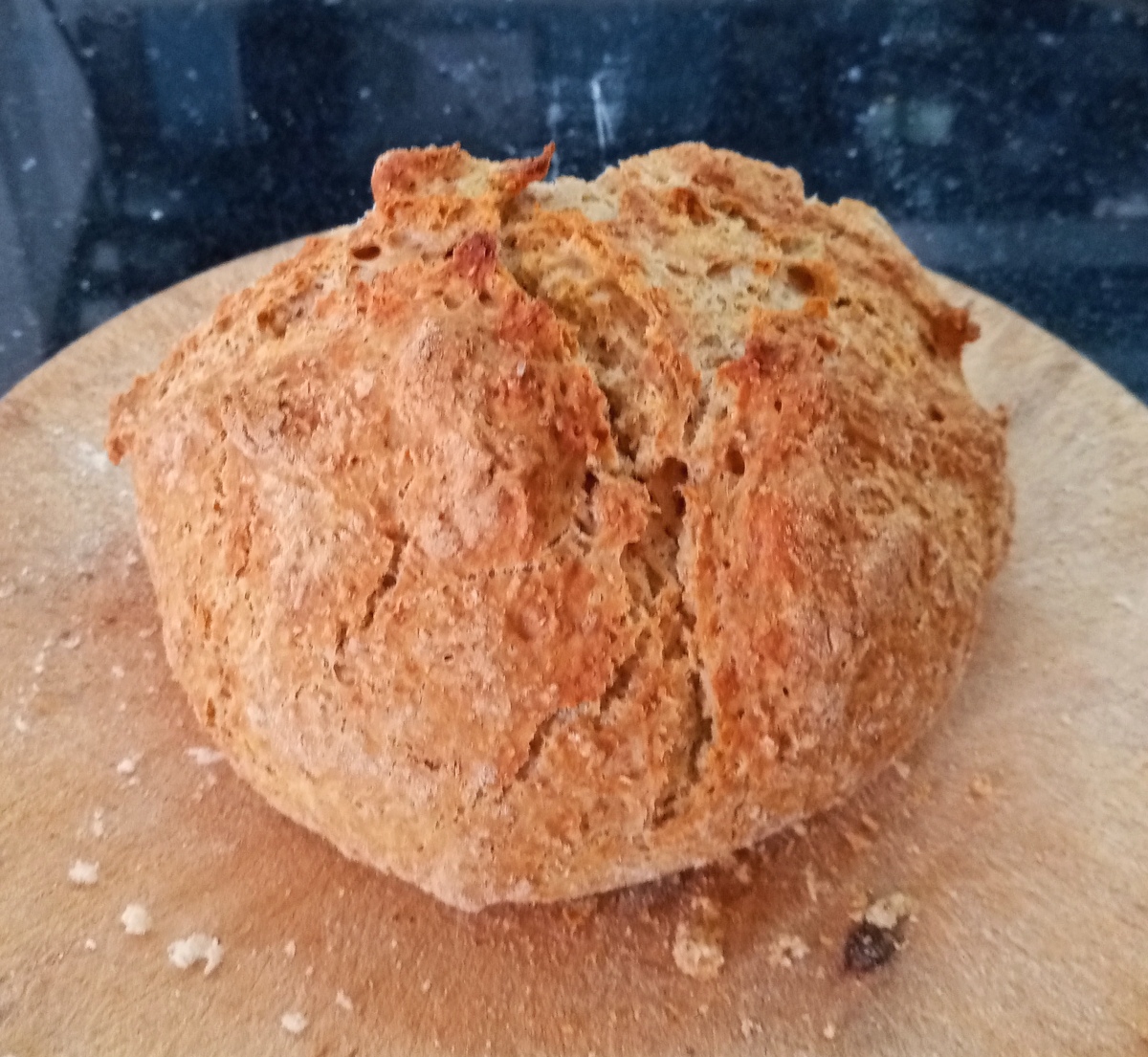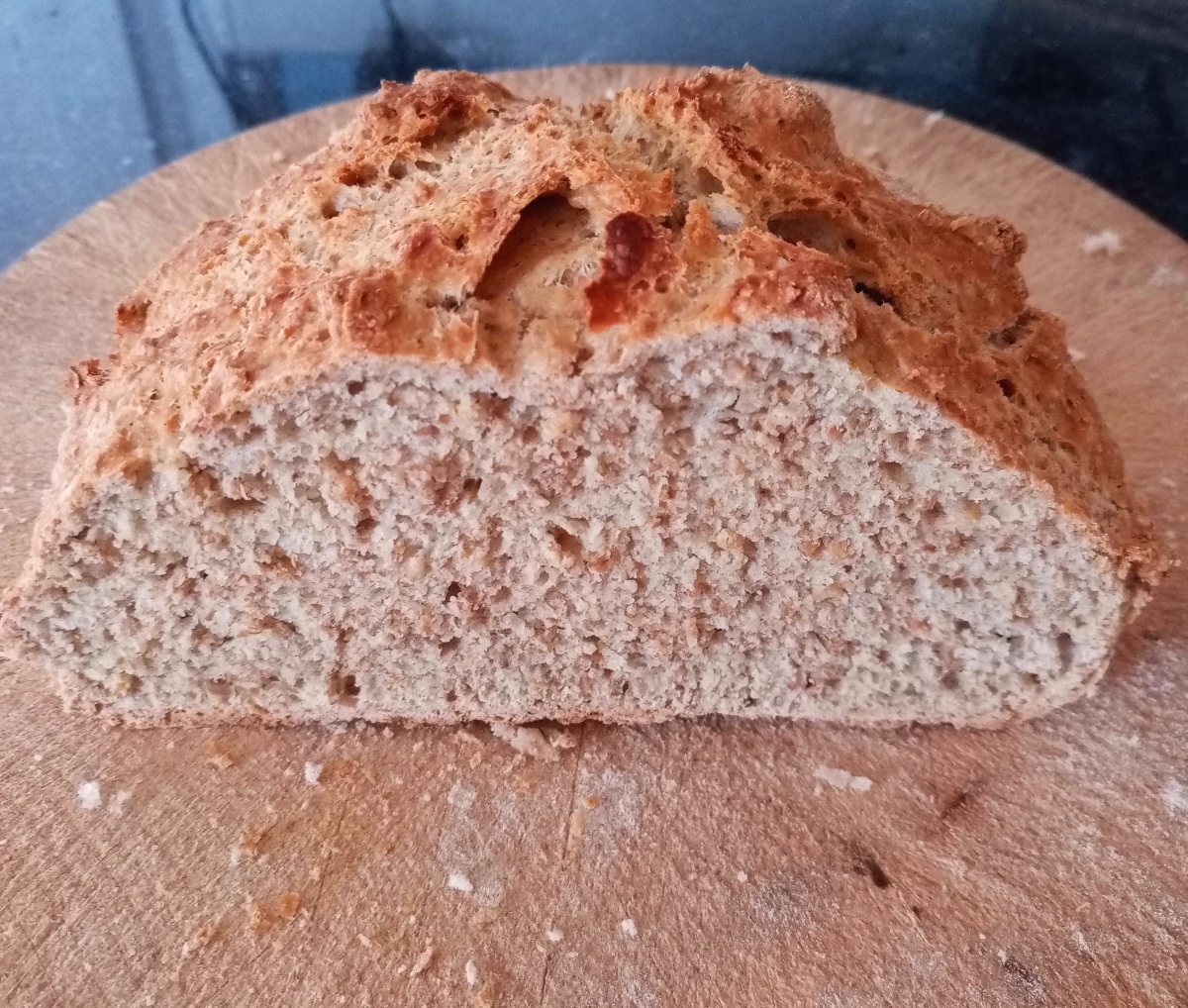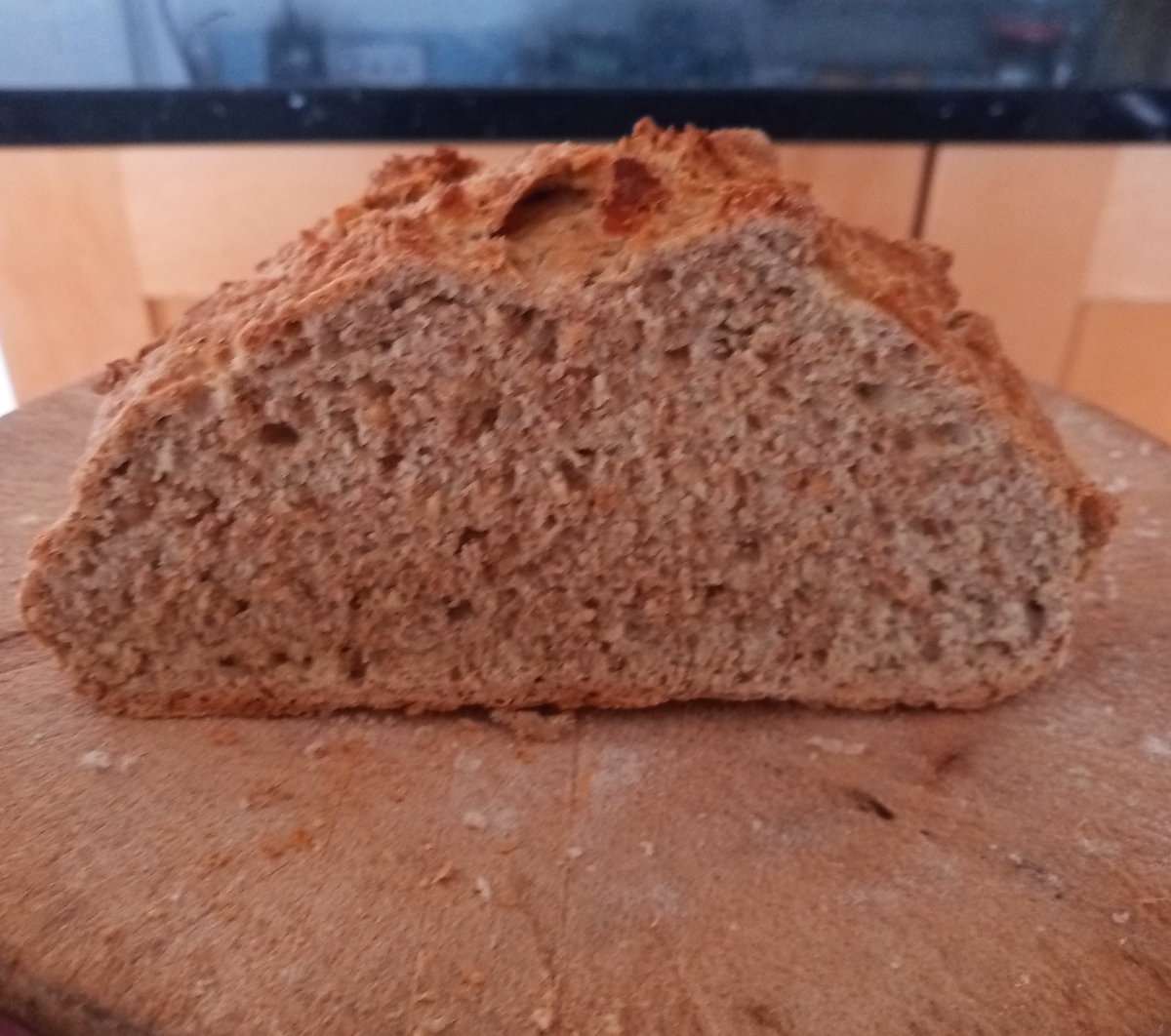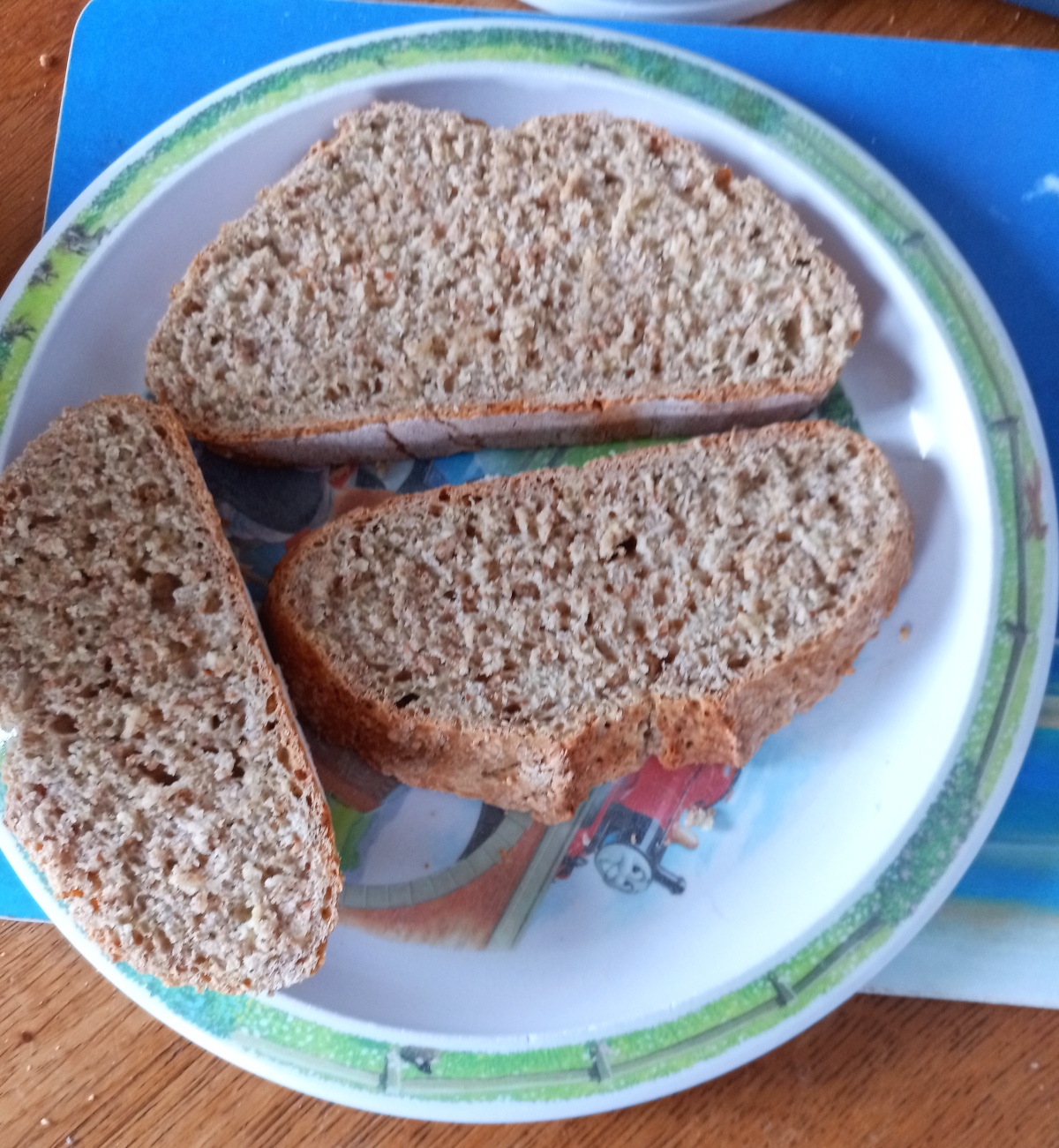I wanted to make some soda bread but didn't have any buttermilk. There are recipes that use baking powder or cream of tartar/bicarb, but I got to thinking that lactic acid might be closer to acidic dairy flavours, so why not use some of that? - especially as I had a bag of it (food grade), bought for another project, but not yet used.
A bit of ChatGPT investigation suggested for every gram of baking soda, to use 0.65g lactic acid powder, so this was my recipe:
- 250g soft flour - I used Shipton Mill coarse Irish brown soda bread flour (85% extraction)
- 2.6g bicarb
- 1.7g lactic acid powder
- 2.6g salt
- 98g milk
- 98g water
All the dry ingredients were sifted together and then the mixed liquid was quickly poured in and stirred with a wooden spoon. The dough was turned out and kneaded for a minute and then shaped into a ball and put on a baking tray and scored with a deep cross using a serrated knife.
It was baked covered with a tin for 15 mins at 220C, then uncovered for 20 mins at 200C top and bottom for 20 mins.
It turned out very tasty - I've actually made it a couple of times now. It's great as an almost "instant" bread, though it does stale very quickly. You can also add 1 tbs sugar and 1 tbs butter for a bit of enrichment.
I do wonder about buttermilk anyway; I don't think the cultured buttermilk we buy these days has much resemblance to the buttermilk of old, which I believe was a thin watery lactic liquid - so what is the point of using it?
I would like to try some "proper buttermilk", but I think it would be difficult to get hold of.
Probably the best bet would be to make your own as a byproduct of buttermaking.
Here are some pictures of the soda bread - the quality isn't great as my main phone was out of action:




Lance
- albacore's Blog
- Log in or register to post comments
That's a nice looking loaf! It's good to see a direct test of something that sounds as if it should work.
I'm sure you are right about buttermilk, and it was relatively low fat, too, since most of the fat stayed with the milk solids. Then the liquid was allowed to sour (or more likely, couldn't be prevented from souring so quick! use it up). Still, I do like the "full fat" thick product made by a few dairies here in the US in some quick breads and scones/biscuits. I suppose the milk in your recipe played the same role.
Baking covered is definitely a good way.
TomP
as a substitute for buttermilk. I typically use 1 part yogurt to 3 parts milk, by volume. The fat content of the milk doesn’t seem to have much effect on the finished product.
We almost always have yogurt on hand but buttermilk is more of a hit or miss proposition.
Paul
I do use buttermilk sometimes, but it tends to get left in the fridge. I prefer to use the live stuff, but in the UK a lot of it is pasteurised, so I buy the Polish version.
It's also possible to use it in place of a mesophilic starter in cheesemaking.
Next I might try the lactic acid in scones/biscuits.
Lance
Lance, your soda bread looks very inviting. I’ve never made a soda bread and yours looks great.
Benny
Thanks Benny - you should give soda bread a try. Just quick enough to make fresh bread for breakfast.
Lance
That looks inviting, Lance. I bet it tastes delicious too.
Have you tried using pickle juice? I always have roughly 2 liters of pure, unseasoned, freshly squeezed out kimchi juice once a week. I used to make bread with kimchi juice, but felt like being trapped in the guilt of throwing away stuffs. So I set myself free from the guilt and went full blown psychopath😂
Jay
Thanks Jay - psychopathic kimchi juice, eh. Mind blowing chili?
I do indeed have a jar in the fridge, but nearly empty now. It will soon be time to make some more.
I'm sure it would work as an acidulant in soda bread, but getting the quantity right might be tricky.
Lance
Yeah, once the acid is neutralized, it becomes umami bomb. I imagine that would simplify your quest for proper buttermilk, since powdered whole milk or powdered whey can be used instead (unless it has to be buttermilk at all cost)
I used to put kimchi juice in crusty bread. I boil the liquid briefly to kill the microbes, add baking soda until no longer taste sour, then proceed with instant yeast
Jay